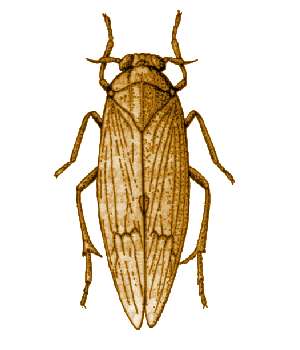At the end of each Major League Baseball season, the league leaders of various statistical categories are announced. Leading either the American League or the National League in a particular category is referred to as a title.
AFI's 100 Years...100 Stars is the American Film Institute's list ranking the top 25 male and 25 female greatest screen legends of American film history and is the second list of the AFI 100 Years... series.

The following is a list of players, both past and current, who appeared in at least one game for the St. Louis Cardinals franchise, including the 1882 St. Louis Brown Stockings, the 1883–1898 St. Louis Browns, and the 1899 St. Louis Perfectos.

Cercopidae are the largest family of Cercopoidea, a xylem-feeding insect group, commonly called froghoppers or spittlebugs. They belong to the hemipteran suborder Auchenorrhyncha. A 2023 phylogenetic study of the family suggested the elevation of subfamily Ischnorhininae to full family status as Ischnorhinidae, leaving a monophyletic Cercopinae.

Flatidae are a family of fulgoroid planthoppers. They are cosmopolitan in distribution and are distinguished from others in the superfamily by a combination of characters. Like all other planthoppers, they suck phloem sap of plants. Some species are known to communicate with vibrations through the plant stems. Communication may be with mates, or with ants that tend the nymphs, protecting them and gathering honeydew secretions. Adults of some species have brightly coloured forewings which are tougher and known as tegmina unlike the membranous hindwings which are used for flight. Although a few can be identified by their coloration, most species requires dissection and examination under a microscope with access to literature on already described species.
Oecleini is a planthopper tribe in the subfamily Cixiinae.

Achilidae is a family of planthoppers, sometimes called "achilids" in the order Hemiptera. There are at least 520 described species in Achilidae.

Dictyopharinae is a subfamily of dictyopharid planthoppers in the family Dictyopharidae. There more than 100 genera and 500 described species in Dictyopharinae.

Nilaparvata is a genus of planthoppers in the subfamily Delphacinae and tribe Delphacini Leach, 1815.

The Flatinae are a subfamily of planthoppers, erected by Maximilian Spinola in 1839. Genera have been recorded from all continents except Antarctica: especially in tropical and subtropical regions.

Delphacini is an important tribe of planthoppers with a world-wide distribution.
Tropiduchus is a genus of planthoppers, recorded from Africa and Malesia.

The Plectoderini are a large tribe of planthoppers in the family Achilidae, erected by Ronald Gordon Fennah in 1950. Genera have a world-wide distribution, but are hardly represented in Europe or northern Asia.
Mnemosyne is a genus of planthoppers in the subfamily Cixiinae, erected by Carl Stål in 1866; it is the only extant type genus of the tribe Mnemosynini. Species are recorded from: South America, Africa, the Indian subcontinent, SE Asia and Australia.









